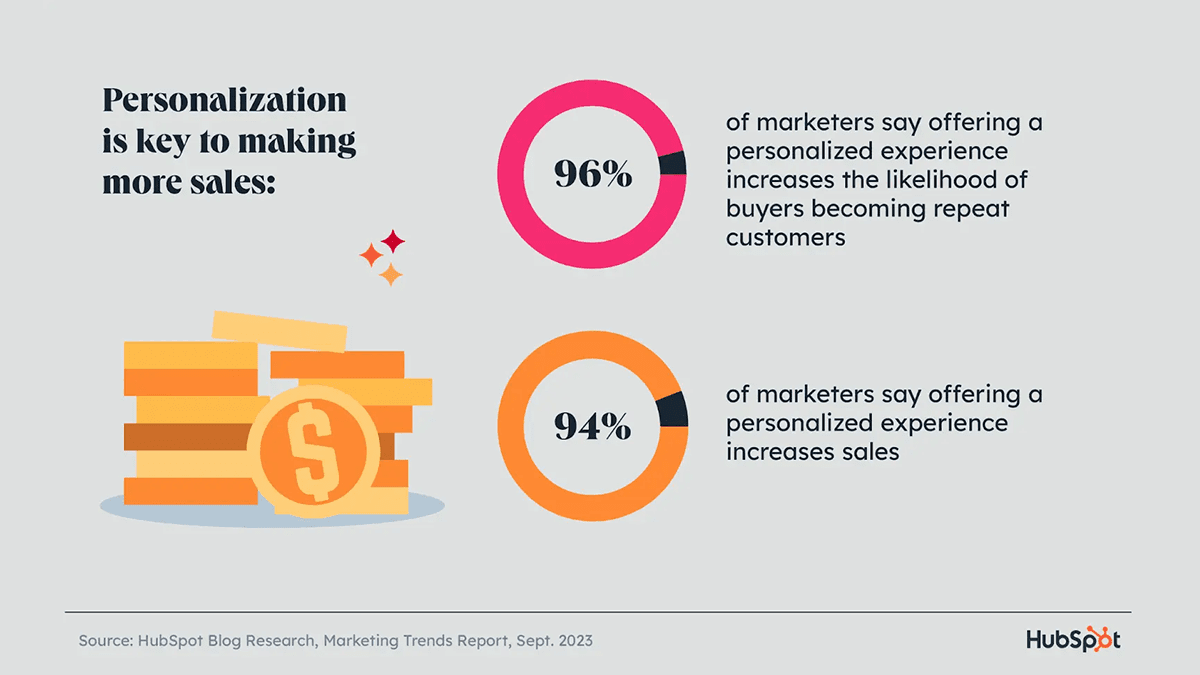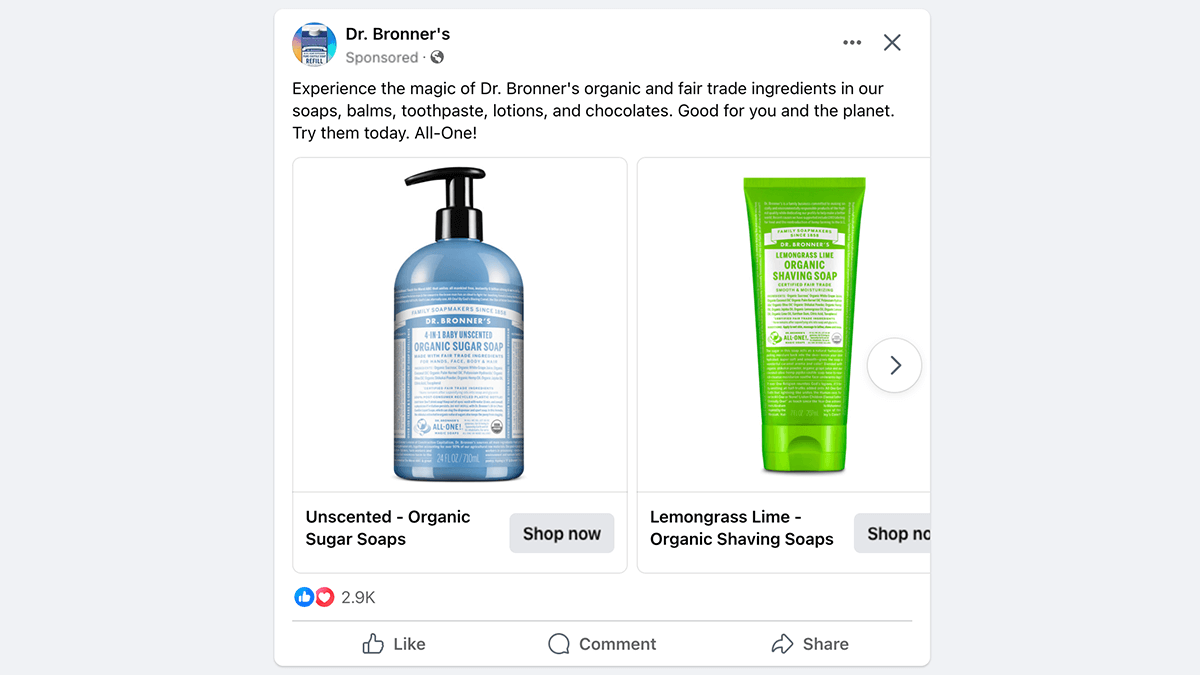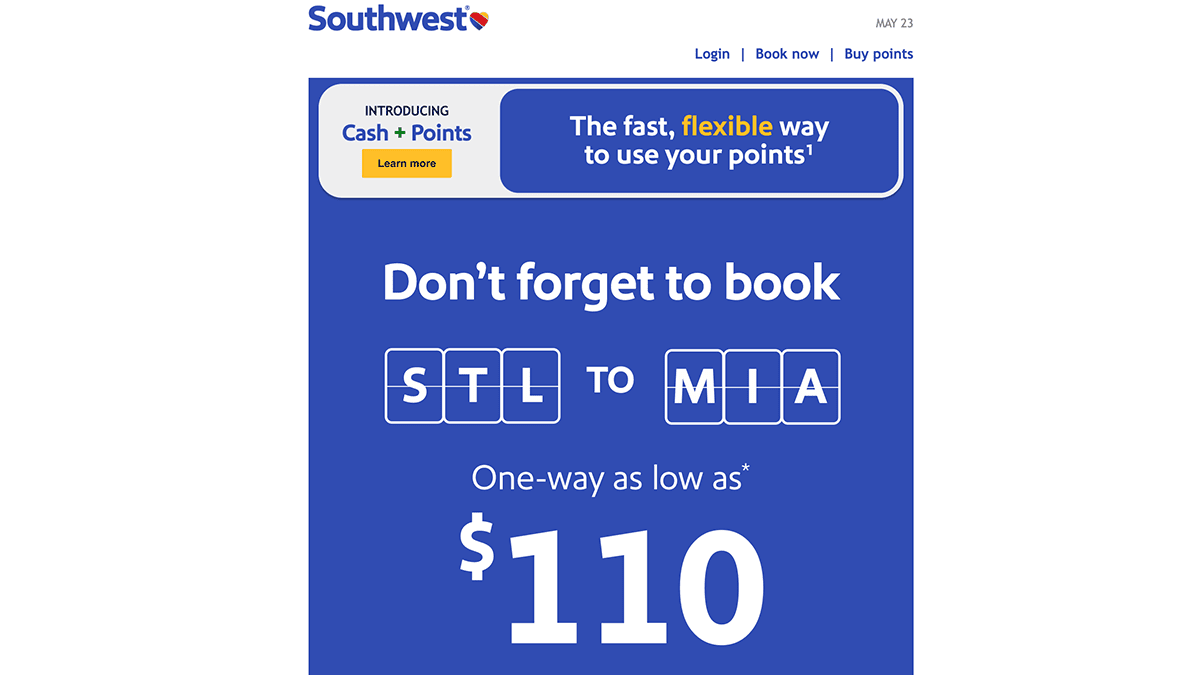If you sell products or services online, you’re likely using some type of behavioral marketing tactics to help reach your target audience. And if you aren’t, you should be.
Behavioral marketing is a strategy that uses data on consumer behaviors and interactions to create personalized and targeted marketing efforts and influence purchase behavior. Recent data indicates that businesses who use behavioral segmentation—the process of dividing a market into distinct groups based on their behaviors—report a 760% increase in revenue.
That data is pretty compelling, but there are even more reasons to use behavioral marketing tactics to reach your target audience. We’ll explain everything you need to know about this dynamic marketing strategy and how to implement it in your business.
What is Behavioral Marketing?
Behavioral marketing is an approach that leverages data on consumers’ behaviors and interactions with a brand to create more personalized and effective marketing campaigns. Instead of relying on traditional demographic data, behavioral marketing focuses on what people do—how they browse, what they click on, their purchasing patterns, and their engagement with content. By analyzing customer behavior data, businesses can tailor their messages to meet the needs and preferences of their audience.
Understanding Consumer Behavior and Customer Loyalty
To fully understand behavioral marketing, you must first understand consumer behavior and its impact on customer loyalty. Consumer behavior includes all the actions and decision-making processes related to selecting, purchasing, or using products and services. It’s influenced by psychological, social, and economic factors.
Behavioral marketing analyzes this data to uncover patterns, such as a customer frequently buying pet supplies, allowing businesses to send personalized offers and recommendations. This enhances the shopping experience and fosters customer loyalty, as customers are more likely to return when they feel a brand understands and anticipates their needs. It’s a great way to increase sales, influence user behavior, and create loyal customers.

Image source: Hubspot
How Does Behavioral Marketing Affect Modern Business?
By leveraging consumer behavior data in your marketing strategy, businesses can create highly personalized messages that resonate with individual customers, leading to better engagement and higher conversion rates.
Enhanced Personalization and Targeted Campaigns
Behavioral targeting allows businesses to understand their customers’ needs and preferences. This means instead of casting a wide net, businesses can focus their efforts on specific segments of their audience, resulting in more efficient use of marketing resources. For example, if a customer frequently purchases eco-friendly products, a retailer can send them personalized offers and content related to sustainable goods.
Improved Customer Experience and Satisfaction
When customers receive personalized and relevant content, they are more satisfied with their interactions with the brand. They feel understood and valued, which enhances the overall customer experience. For instance, streaming services like Netflix personalize content recommendations based on viewing habits, making the user experience more enjoyable and engaging.
Increased Customer Retention
By continually analyzing customer behavior, businesses can identify opportunities to re-engage lapsed customers and retain existing ones through personalized offers and communications. This helps build long-term relationships and encourages repeat purchases. For example, e-commerce businesses can use email retargeting to remind customers of items left in their shopping cart, offering incentives to complete the purchase.
Higher Conversion Rates and Better ROI
Personalized marketing messages are more likely to convert because they address the specific needs and interests of the customer. A behavioral segmentation approach not only improves conversion rates but also leads to better return on investment (ROI) for marketing campaigns.
Enhanced Customer Insights
The data collected from different types of behavioral marketing allows businesses to make more informed decisions about their marketing strategies and product offerings. For instance, analyzing purchasing patterns can help a retailer determine which products to stock more of and which ones to discontinue.
Types of Behavioral Marketing
There are many different types of behavioral targeting strategies, from email marketing to retargeting ads through digital marketing channels. Combining these efforts leads to a more cohesive and effective marketing strategy, enhanced personalization, increased engagement, and ultimately higher conversion rates and customer loyalty.
Here are some behavioral marketing examples:
Google Ads: Targeted digital ads such as Google Ads use behavioral targeting to show ads to users based on their search history, browsing behavior, and interests. Advertisers can create highly targeted campaigns that reach users who are most likely to be interested in their products or services.
Facebook and Instagram Ads: Social media platforms like Facebook and Instagram use behavioral data to serve targeted ads. Businesses can create ad campaigns that target users based on their interests, online behaviors, and interactions with similar brands.

Email Marketing
Email marketing is the process of sending personalized emails to users based on their interactions with the brand, such as past purchases or website visits. Airlines like Delta and Southwest use behavioral data from their loyalty programs to offer personalized rewards and promotions. Frequent flyers might receive offers for upgrades, lounge access, or discounted flights based on their travel history and preferences.

Retargeting
Ads are shown to users who have previously visited your website or engaged with your content but did not complete a desired action. By pushing personalized ads or emails with reminders and special offers, businesses can recover potentially lost sales. These ads often include images of the abandoned items and may offer discounts or incentives to complete the purchase.

Product Recommendations
Amazon is a prime example of using behavioral data to suggest products based on a user’s browsing and purchase history. By analyzing what customers have looked at or bought in the past, Amazon can recommend related or complementary items, enhancing the shopping experience and driving sales.

Dynamic Website Content
Retailers like ASOS and Zalando use dynamic content on their websites to show different products, offers, and promotions based on the user’s browsing history. For instance, if a customer frequently views sportswear, the homepage and product recommendations will prioritize sports-related items.
Push Notifications
Personalized notifications are sent to users’ devices based on their app usage and behavior to re-engage them. These notifications can include timely updates, special offers, or reminders that encourage users to return to the app and complete desired actions.
Loyalty Programs
Retail chains such as Starbucks and Sephora use loyalty programs to gather behavioral data and offer personalized rewards. Customers receive points and special offers based on their purchasing behavior, encouraging repeat visits and higher spending.
Content Personalization
Website and email content are tailored to individual users based on their interests and previous interactions. Each user receives relevant and engaging content, increasing the likelihood of conversion and customer satisfaction.
In-App Messaging
Messages are sent within a mobile app based on user actions and preferences to enhance engagement and retention. These messages can provide personalized recommendations, alerts, or support, creating a more interactive and user-friendly app experience.
Predictive Analytics
Using data to anticipate future behaviors and trends allows for more proactive and targeted marketing efforts. By forecasting customer needs and preferences, businesses can create timely and relevant campaigns that meet customers where they are in their buying journey.
Customized Content
Streaming services such as Netflix analyze viewing habits to recommend shows and movies that match users’ preferences. This keeps users engaged and encourages them to stay subscribed to the service. Understanding what genres, actors, and types of content a user enjoys can create a highly personalized viewing experience.
Challenges and Considerations in Behavioral Marketing
While behavioral marketing offers plenty of advantages, it also comes with challenges and considerations:
- Data Privacy: Collecting and using customer data responsibly is essential. Businesses must comply with data privacy regulations.
- Data Quality: The success of behavioral marketing relies heavily on the accuracy and quality of the data collected. Inaccurate data can lead to misguided marketing efforts.
- Ethical Concerns: Businesses must strike a balance between personalization and intrusion. Overly aggressive marketing tactics can lead to customer discomfort and mistrust.
- Technical Complexity: Implementing behavioral marketing requires sophisticated tools and technologies for data collection, analysis, and automation.
How to Implement a Behavioral Marketing Strategy
As with any good marketing campaign, implementing behavioral marketing requires a strong strategy backed by data and best practices. Here are some tips for implementing behavioral marketing to influence purchase behavior and increase your bottom line.
- Data Collection: Gather data on user behaviors across various touchpoints, such as website activity, purchase history, email interactions, and social media engagement.
- Segmentation: Divide your audience into distinct segments based on shared behaviors and characteristics. This allows for more targeted and relevant marketing efforts.
- Personalization: Use the segmented data to create personalized content and offers that resonate with each specific group. This can include dynamic website content, targeted email campaigns, and personalized product recommendations.
- Automation: Leverage marketing automation tools to execute your behavioral marketing strategies efficiently. Automated workflows can help send personalized emails, retarget ads, and manage customer journeys.
- Testing and Optimization: Continuously test different aspects of your marketing campaigns, such as content, timing, and delivery channels. Use A/B testing to determine what works best and make data-driven optimizations.
Harness the Power of Behavioral Marketing for Business Growth
Behavioral marketing aims to transform the way businesses interact with their customers by leveraging data-driven insights to create personalized and relevant marketing campaigns. By understanding and responding to individual behaviors, businesses can enhance customer experiences, drive higher engagement, and build lasting loyalty.
To maximize the potential of behavioral marketing and achieve optimal results, consider partnering with an email marketing agency that specializes in behavioral segmentation and personalized marketing messages. Start making data work for you today and take your marketing efforts to the next level.






